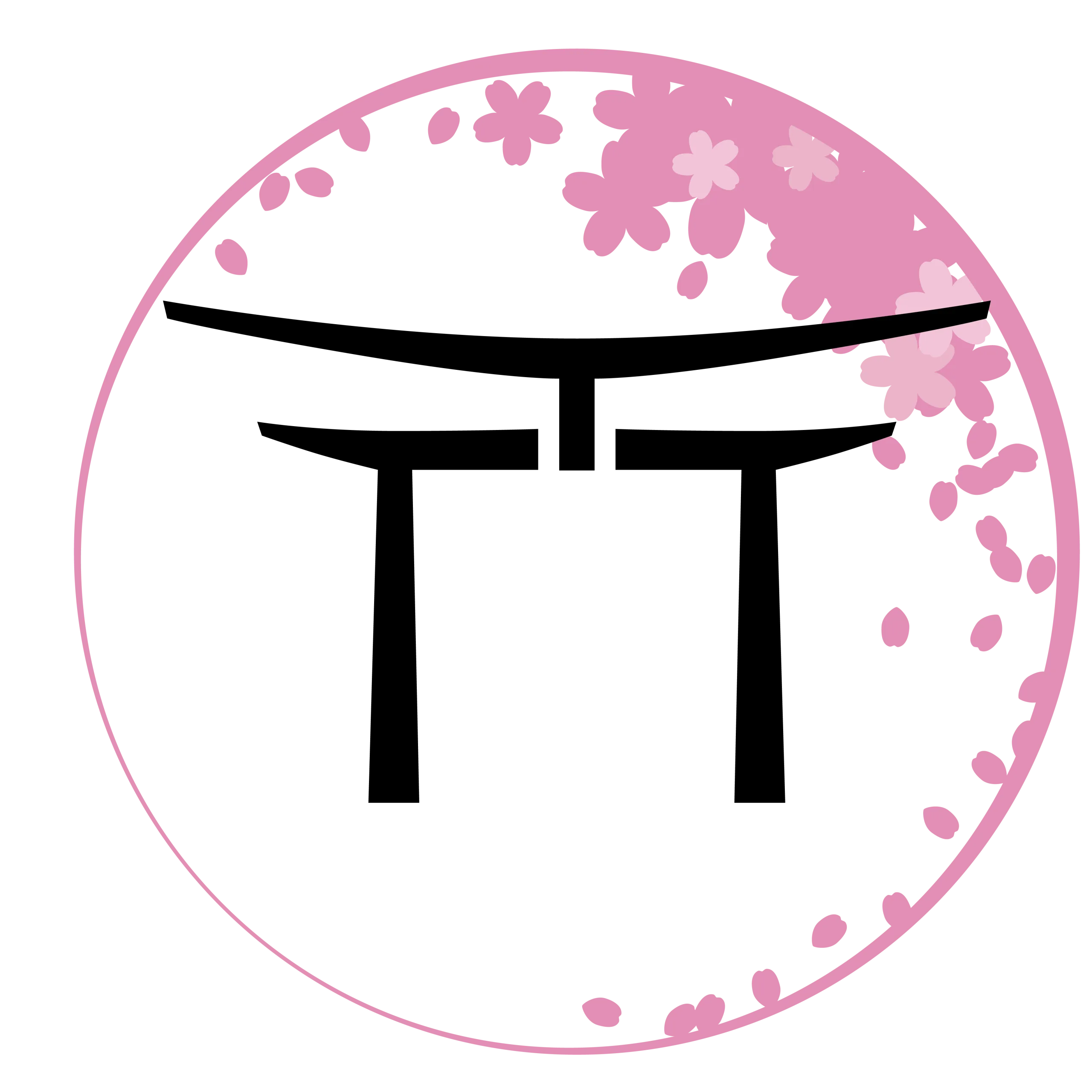Baby’s First Shinkansen (Bullet Train) Ride in Japan
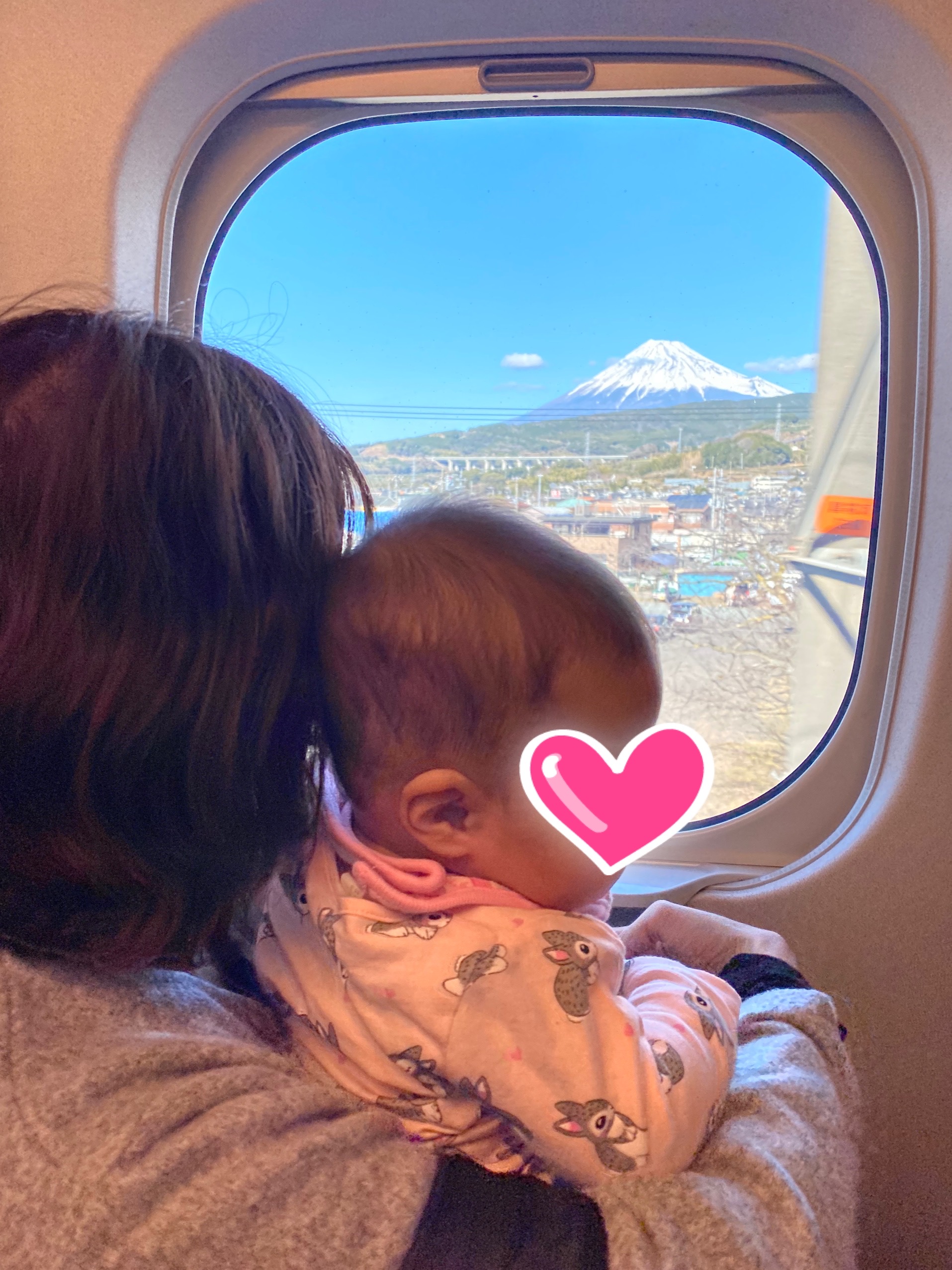
Last Updated on July 2, 2024 by Kay
This post may contain affiliate links, meaning I may earn a small commission on any purchases through those links at zero additional cost to you. Whatever I make goes to keeping this website running and I am forever grateful for the support. See my Privacy Policy for more information.
Happy New Year, or as they say in Japan, 明けましておめてとうございます (akemashite omedetougozaimasu)! I thought it would be fitting to talk about what Baby A did on the first day of the year —ride on the Shinkansen (bullet train) in Japan.
This article contains information about booking baby-friendly seats on the Shinkansen (during the busiest national holiday season in Japan), our experience riding the Shinkansen for the first time with our 6-month-old daughter (and rabbit), and some helpful tips to make your trip easier.
Traveling with a baby in Japan? Make sure you read this article about what to know and essential tips.
Table of Contents
Booking a Shinkansen Ticket on New Year’s Day in Japan
Japan’s train system is famous worldwide for being convenient and dependable. However, traveling in Tokyo (and perhaps in other big cities as well) can be challenging when you have a baby. You have to try to avoid traveling during peak times, which is a very small window in Tokyo, and think about whether or not you want to deal with the hassles of a stroller when it takes up so much space and elevators are few or at times under repair.
These difficulties are compounded when traveling during New Year’s in Japan. The holiday rush usually starts the first weekend before January and lasts for a little over a week. Once people are off work, the trains within the city are not as crowded as usual; however, traveling by Shinkansen is another story as people exit Tokyo en masse to make their way back to their hometown.
This means buying reserved seats on the Shinkansen the moment they are on sale is essential if you don’t want to stand, and if you have a baby, standing with luggage in a cramped space is the last thing you want to do for several hours. Tickets for the Saturday before New Year’s up until the first usually sell out within minutes, and within seconds for certain seats.
Shinkansen tickets for reserved seats are not available for purchase until one month before the departure date. We had the option of taking a flight to my husband’s hometown in Hiroshima and booking that much earlier in advance but as we had a rabbit, we felt that it would be easier and less stressful to simply take the Shinkansen. (Small pets are allowed on the Shinkansen as long as they are kept within a carrier that doesn’t exceed a certain size. For more information, please visit JR Central’s website.)
Thankfully, my in-laws don’t usually celebrate New Year’s on the first. This year they celebrated New Year’s on January 2nd, which meant that we had to leave Tokyo for my husband’s hometown on New Year’s Day.
The tickets for January 1st went on sale on December 1st. As it was Sunday, it would be especially competitive to get tickets.
My husband was already at the computer and had logged into the JR Central website minutes before the tickets went on sale. When the clock struck 10, he quickly grabbed two seats on the Nozomi, which were located at the very back of Car 11, had storage space at the back, and were the closest to a spacious washroom with a changing table.
He had wanted other seats in that car that had space to accommodate a stroller but those had already been taken within seconds. The same thing happened when he booked tickets for the way back as well on Monday, January 6th. (We felt that the weekend before people returned to work would be too chaotic so we chose to come back on a weekday.)
Since our daughter didn’t need a seat and would instead be sitting on one of our laps, there was no fee for her to ride the Shinkansen.
If you are visiting Japan, I highly recommend getting the JR Pass. This pass will give you unlimited travel all over Japan using trains operated by the Japan Railways (JR) Group. This includes Shinkansen (bullet train)! I honestly wish I was able to use the pass because it would save me so much money.
With the JR Pass, you can also secure seat reservations for free, and this is especially recommended if you’re traveling during peak seasons like Golden Week (end of April to the beginning of May), Obon Season (mid-August) or the New Year (late December to early January). It’s also worth making a seat reservation if you wish to guarantee a seat on a specific service or are in a large group that wants to sit together.
Heading to Tokyo Station on New Year’s Day in Japan
To make our trip as easy as possible, we ordered Baby A’s formula, diapers, bottle cleaning goods, etc., as well as our rabbit’s food, online and had it sent to my in-laws’ in advance. We also sent a small box of our clothing so that we only had a small rolling suitcase to carry alongside Baby A’s diaper bag and our bunny.
After much deliberation, my husband and I decided to forgo the stroller, as we weren’t sure whether there would be space to store it on the Shinkansen, and instead take turns wearing Baby A using the Ergo Baby Carrier.
With Baby A strapped to my husband and me carrying the bunny, we took a taxi on New Year’s morning to a nearby station that had a rapid train going straight to Tokyo Station. We arrived an hour early and with time to kill, we decided to have a quick breakfast at a cafe in the station. We were lucky to find a place where we could sit down without having to wait as the station is quite crowded during the holidays.
We decided to start heading to the Shinkansen gates about twenty minutes before our train’s departure as we knew it would arrive early and didn’t want to be rushed. I also wanted to see if any stores on the platform were selling 駅弁 (ekiben), which are special bentos for eating on the train. These can also be bought at stores within Tokyo Station before heading through the Shinkansen gates but as it’s usually quite crowded, I decided to stick with seeing what the platform had to offer.
Riding the Shinkansen (Bullet Train) with Baby and Bunny
The good thing about taking the Shinkansen from Tokyo Station is that it doesn’t depart immediately, so you can take a bit of time getting on.
We were second in line to get on but the people ahead of us had already put their luggage in the space behind our seats. Thankfully there was still space so we popped our suitcase next to theirs.
I was surprised to see that the people who had booked the seats that accommodated strollers didn’t have a stroller or even a child. This was also the case on the way back to Tokyo. I’m not entirely sure why those people wanted those seats so desperately considering they were taken within seconds of going on sale. Perhaps they liked the extra space next to them?
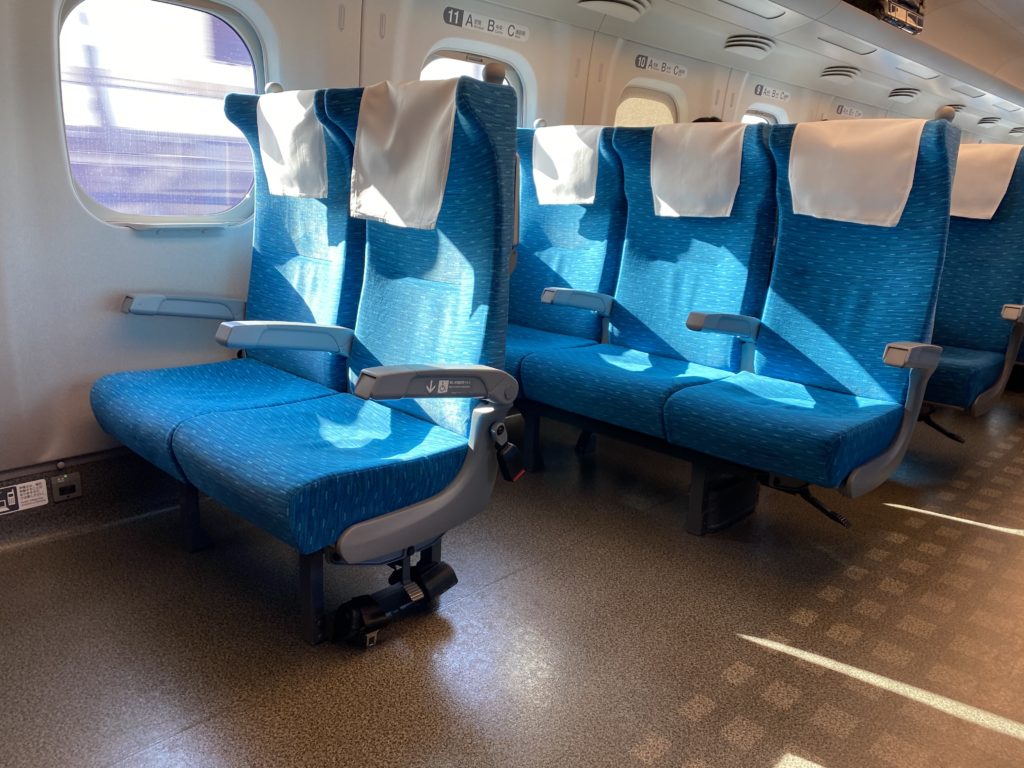
There is a space where Seats 12C (pictured) and 13C would have been in order to make space for a stroller or a wheelchair.
The ride from Tokyo to my husband’s hometown took about 3.5 hours. The seats provided enough room for me to put our rabbit in his carrier at my feet and I hung Baby A’s diaper bag from a hook near the window for easy access.
As we had ten minutes before departure, my husband held Baby A while I popped out to get a とんかつ駅弁 (tonkatsu ekiben), a breaded deep-fried pork cutlet bento, from a store on the platform.
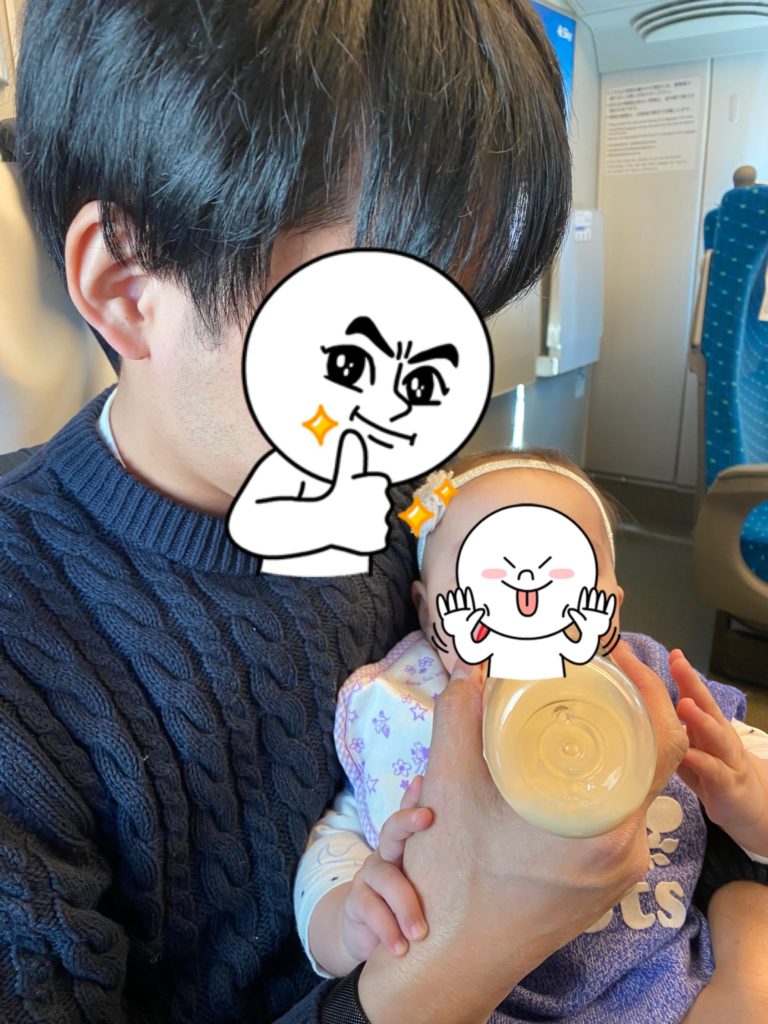 Our seats on the way to Hiroshima. Behind the seats was an area to store luggage and is large enough to store folded strollers as well.
Our seats on the way to Hiroshima. Behind the seats was an area to store luggage and is large enough to store folded strollers as well.
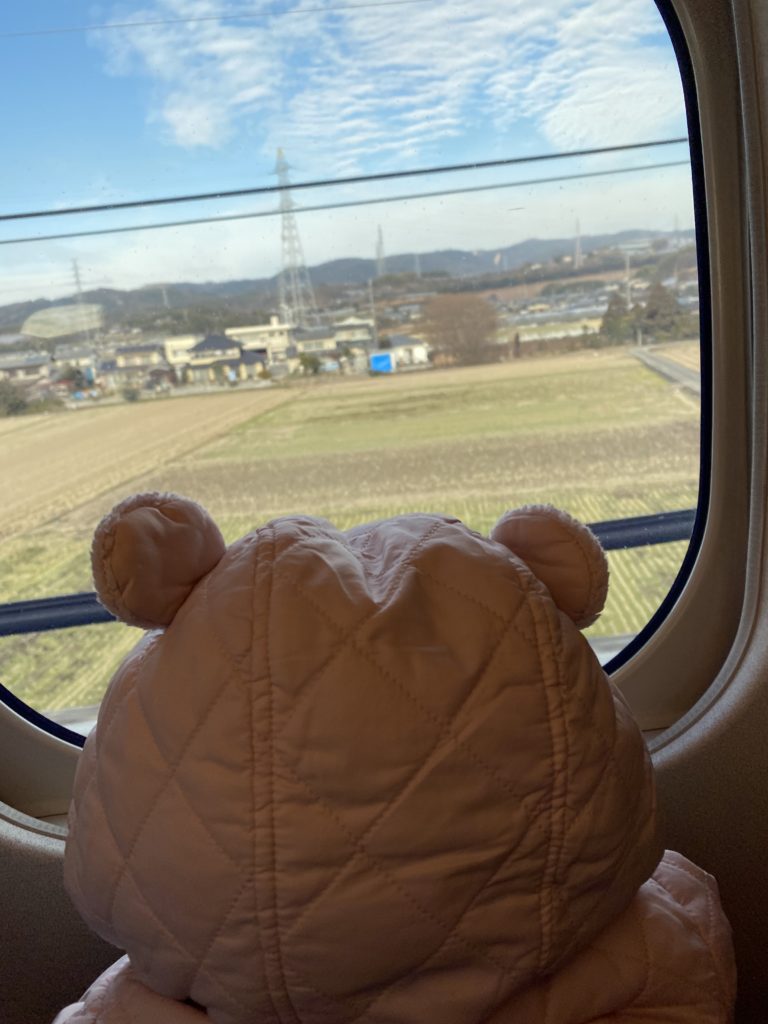
Baby A enjoying the scenery as we left Hiroshima to head back to Tokyo
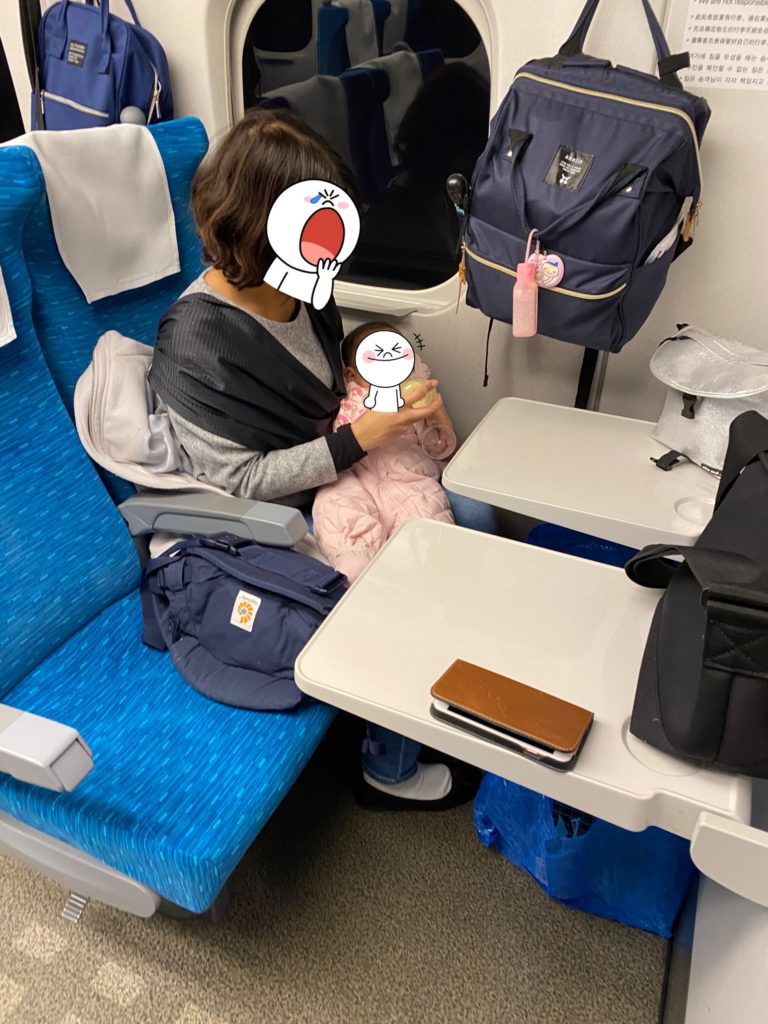 The seats on the way back to Tokyo, which were the same seats we had on the way to Hiroshima. The area where the table trays are located was the luggage storage space when we went to Hiroshima and the seats were facing the opposite direction. My bunny was in his carrier in the blue bag near my feet. (This picture is also a great depiction of my postpartum hair loss. Just keeping it real, guys.)
The seats on the way back to Tokyo, which were the same seats we had on the way to Hiroshima. The area where the table trays are located was the luggage storage space when we went to Hiroshima and the seats were facing the opposite direction. My bunny was in his carrier in the blue bag near my feet. (This picture is also a great depiction of my postpartum hair loss. Just keeping it real, guys.)
During the trip, Baby A was happy in my lap and when she got fussy, my husband walked through the Shinkansen with her in his Ergo carrier and she slept. Feeding her was quite easy as we had ample space and a tray, but changing her diaper was another thing. As most people in Car 11 were parents, there was usually a short line for the multipurpose room, a large washroom with a changing table.
My husband and I started feeling a bit motion sick having to hold the baby while waiting in one place for the washroom to open. Using the changing table was a bit scary as well despite the belt on the table to keep the baby in place as the train swayed slightly.
Baby A hated it and screamed her head off, something my husband or I could hear from our seats when the other was changing her diaper. From the lack of screams, it seemed that other babies were fine, though. The multipurpose room was also spacious and had a diaper disposal bin as well as a small net for your belongings right by the changing table.
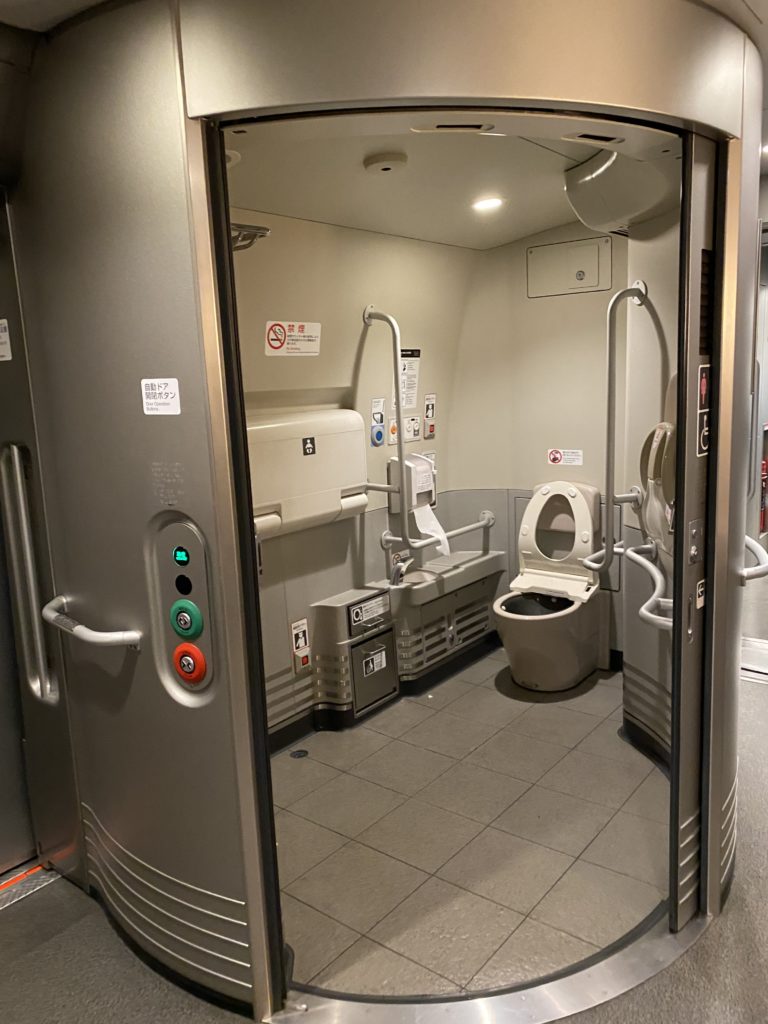 The multipurpose washroom in Car 11
The multipurpose washroom in Car 11
Our bunny was content during the entire trip and it was nice to be able to easily check up on him every now and then as he was right in front of me. Overall, the trip was relatively smooth minus the waiting time for the multipurpose room.
Tips for Traveling with a Baby on the Shinkansen (Bullet Train)
- Pack as light as you can
Although the seats are roomier than those on an airplane, space is still limited on the Shinkansen. You can put your luggage in storage space above you but this may be tricky to do if you’re traveling alone and wearing the baby. There is also some storage space at the back of each car but this can fill up quickly and from May 2020 can only be used by passengers sitting in the row in front of this area.
Also, although I am suggesting that parents pack light, it’s also important to remember that accidents and delays happen, so it’s good to be prepared. We packed eight ICREO formula tetra packs for Baby A, several bottles, and had much more diapers than usual in case something happened and we were stuck on the Shinkansen. We also had a range of small and light toys, such as rattles and balls, as well as books ready if she got bored.
- Try not to bring a stroller and wear the baby, if possible
I had some reservations about this because I wasn’t sure what it would be like on the train having to hold the baby the entire time. However, it worked out very well. We were able to get through Tokyo Station (which is overwhelming, to say the least) quite easily and quickly as we didn’t have to wait for elevators. My husband wore his Ergo and I wore my Konny carrier so we were able to pass the baby to each other when one of us was tired. Baby A also liked being able to stand on my lap during the Shinkansen ride and look at the passing scenery.
This isn’t to say that you can’t bring a stroller but if you can’t get a seat that accommodates a stroller, you’ll have to fold it up and place it somewhere, and there may not be any space to do that. Elevators can also be packed with lines to get on, meaning that you might be delayed and in the worst case, miss your train. Sometimes even getting a stroller on and off a train quickly can be stressful as well.
If you decide to bring a stroller and are traveling on the Tokaido-Sanyo Shinkansen line (Tokyo<->Hakata), you may want to book seat 12B or 13B in Car 11 on the Nozomi N700 as there is space next to these seats to accommodate strollers (ie. have room to put the stroller beside you).
In the case that you cannot get these seats and have a stroller, it’s best to fold it up and place it at your feet or in the space at the back of the car (for more detail, check out JR Central’s official website). If you’re traveling alone, try to wear a baby carrier if your child cannot sit up on their own so you can wear your baby when you fold and unfold your stroller.
- Book in advance
You can book seats on the Shinkansen a month in advance online at https://jr-central.co.jp/ex/ for the Tokaido-Sanyo line or at major JR stations. I do not recommend buying tickets for 自由席 (jiyuuseki or non-reserved seats) if you have an infant or small child as there is no guarantee you will get a seat, especially during weekends and holidays.
You can find washrooms fitted with a changing table in odd number cars if you’re traveling on the Tokaido-Sanyo Shinkansen line. The following cars on Shinkansen that travel on lines throughout Japan are considered the most convenient for parents as they have a special room for nursing (or for passengers with special needs) and a multipurpose room, which is a larger washroom with a changing table:
Shinkansen Total # of Cars Car # Nozomi 16 11 Hikari 16 11 Hikari 8 7 Hikari Railstar 8 7 Kodama 16 11 Kodama 8 7 Mizuho 8 7 Sakura 8 7 Kagayaki 12 7 Hakutaka 12 7 Tsurugi 12 7 Asama 12 7
Note that the room for nursing may not be available. If you would like to use the room and it is unoccupied, ask a staff member if you can use it as the door will not open on its own.
As the cars listed above are typically used by parents, you don’t have to worry as much about bothering other passengers if your child cries or is a bit noisy. In fact, on the way back to Tokyo, Baby A decided to shout something in her baby language and other babies responded one by one, causing everyone in the car to burst out laughing. This doesn’t usually happen in Japan, where people usually keep to themselves on public transport, so it was a nice memory of Baby A’s first Shinkansen trip.
You might also be interested in my article on what to know when traveling with a baby in Japan.

